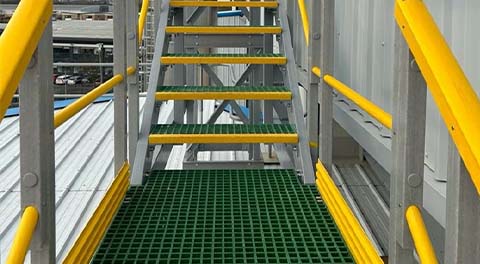loading...
- No. 9, Xingyuan South Street, Dongwaihuan Road, Zaoqiang County, Hengshui, Hebei, China
- admin@zjcomposites.com
- +86 15097380338
- Welcome to visit our website!
frp handrail price
Exploring the Cost of FRP Handrails Factors and Benefits
FRP (Fiber-Reinforced Plastic) handrails have become increasingly popular in various industries due to their durability, lightweight nature, and corrosion resistance. As building codes and safety standards evolve, many facility managers and construction professionals are considering the installation of FRP handrails. But one of the primary questions that often arises is what is the cost of FRP handrails? In this article, we will explore the factors influencing the price of FRP handrails and their associated benefits, making it easier to navigate the investment for your projects.
What is FRP?
Before delving into costs, let's clarify what FRP is. Fiber-Reinforced Plastic is a composite material made from polymer resins and reinforcement fibers, such as glass or carbon. This combination results in a material that boasts high strength-to-weight ratios, making it an excellent choice for various structural applications, including handrails.
Factors Influencing the Cost of FRP Handrails
1. Material Type The specific type of fibers and resins used can significantly influence the price. Glass fiber is typically less expensive but may not offer the same strength as carbon fiber, which is costlier due to its superior properties. You must weigh the benefits against your budget.
2. Design and Customization Custom-designed FRP handrails that fit specific project requirements will generally lead to higher costs. Standardized designs are more economical, but if aesthetics or functionality is crucial, budgeting for custom solutions may be necessary.
3. Length and Configuration The total length and complexity of the installation will directly impact the price. More extensive installations or those requiring intricate designs or unique configurations will be more expensive.
4. Manufacturer and Supplier Prices can vary significantly among manufacturers. Well-established companies with a reputation for quality and performance may charge more. However, these costs often reflect reliability and longevity, which can save money in the long run by reducing maintenance needs.
5. Installation Costs The cost of labor for installation must also be considered. While FRP handrails are lightweight and generally easier to install than traditional materials like steel or aluminum, hiring skilled labor can still affect the total expenditure.
frp handrail price

Benefits of FRP Handrails
While understanding the cost is crucial, recognizing the benefits of FRP handrails can help justify the investment. Here are some key advantages
1. Corrosion Resistance One of the most significant benefits is that FRP handrails are resistant to corrosion, making them ideal for environments where exposure to chemicals or moisture is common, such as marine or industrial settings.
2. Lightweight and High Strength FRP handrails are significantly lighter than metal alternatives, which can reduce shipping and installation costs. Despite their lightweight nature, they provide exceptional strength and durability.
3. Low Maintenance Unlike traditional materials that may rust, rot, or deteriorate over time, FRP requires minimal maintenance, translating to lower long-term costs.
4. Aesthetics FRP can be molded into various shapes and colors, allowing for a more aesthetically pleasing design compared to standard metal handrails.
5. Safety Features The smooth, non-slip surface of FRP handrails enhances safety while being compliant with most safety regulations.
Conclusion
The cost of FRP handrails can vary based on numerous factors, including material type, design complexity, length, and labor. While initial costs may be higher than traditional materials, the long-term benefits often outweigh these expenses. The durability, low maintenance, and safety features of FRP handrails make them a worthwhile investment for many applications.
When considering FRP handrails for your next project, it’s essential to evaluate these elements thoroughly. Engaging with suppliers and manufacturers can provide valuable insights into specific pricing based on your project's unique requirements. By weighing the initial costs against usability, maintenance, and performance benefits, you can make an informed decision that best suits your needs.
-
Premium FRP Handrail for All ApplicationsNewsAug.29,2025
-
Low Maintenance FRP Mini Mesh Grating ProductsNewsAug.29,2025
-
Innovative FRP Square Tubes for Modern Industrial SolutionsNewsAug.29,2025
-
FRP Water Storage Tanks Wholesale Solutions for Bulk BuyersNewsAug.29,2025
-
FRP Molded Grating Solutions for Diverse Industrial ApplicationsNewsAug.29,2025
-
Construction Advancements Through FRP Pultruded ProfilesNewsAug.29,2025
-
Why Choose FRP Railings, Guardrails, and Handrail Systems?NewsAug.29,2025
